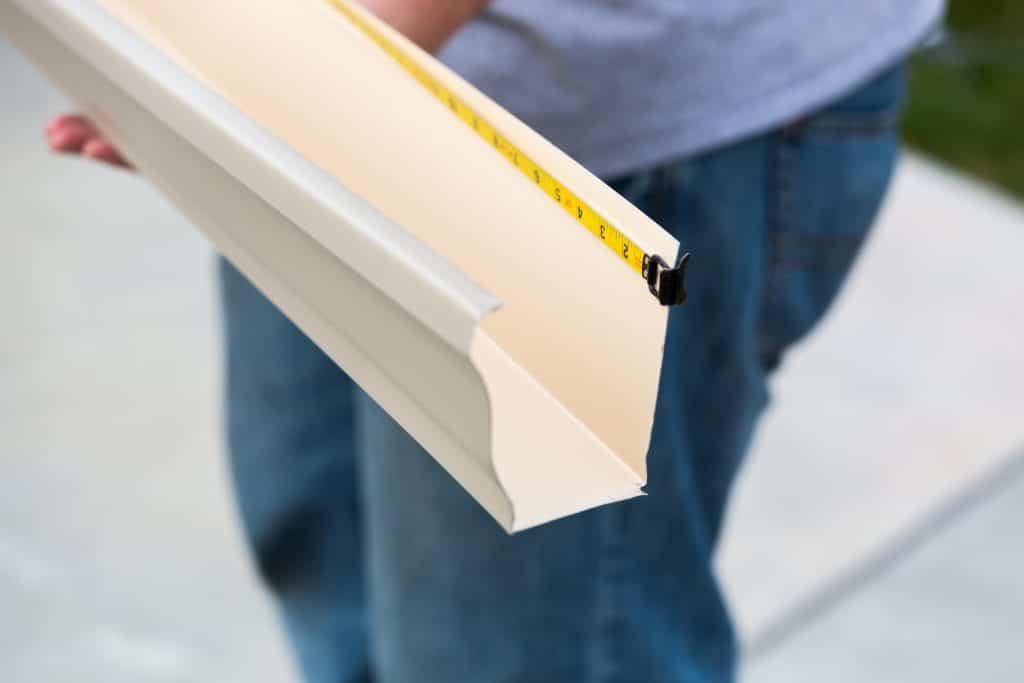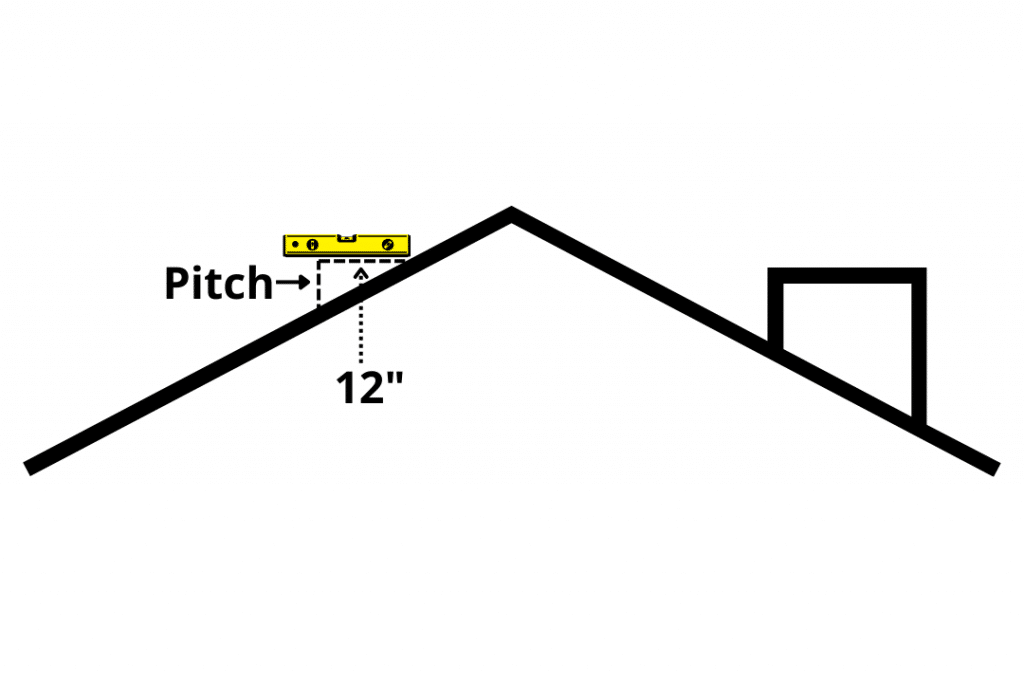
In the simplest sense, the size of your gutters—also known as eavestroughs—determines how much rainfall they can drain. If your gutters are too small, they will not be able to drain properly, and overflow can occur. Over time, this can cause damage to fascia, soffit, the gutters themselves, or even the foundation of your house. Flooding can also be a problem for homeowners whose gutters are too small, with the overflowing water finding a path and collecting in the home.
Contents
Understanding Gutter Sizing
Gutters come in various sizes, typically ranging from 4 inches to 6 inches in width. The most common sizes for residential homes are 5-inch and 6-inch gutters. The size of the gutter affects its capacity to handle water flow, and choosing the right size involves assessing several factors, including roof size, pitch, rainfall intensity, and aesthetic preferences.
One thing to remember is that the cost of new gutters will vary depending on the size, as well as many other factors, so you will need to budget accordingly.
Roof Size and Pitch
The size and pitch of your roof are critical in determining the appropriate gutter size. A larger roof will naturally collect more rainwater, necessitating a bigger gutter to handle the increased volume. Similarly, the pitch or slope of the roof influences how quickly water runs off into the gutters. Steeper roofs accelerate water flow, potentially requiring larger gutters to manage the rapid influx.
If you would like to determine the size of your roof, follow these steps:
- Measure the length and width of each section of your roof
- Multiply the length and width of each section
- Add these numbers together to get the total square footage of your roof
Considering Roof Pitch
Roof pitch is expressed as the ratio of the roof’s vertical rise to its horizontal run. For example, a roof that rises 6 inches for every 12 inches of horizontal run has a 6:12 pitch. Steeper pitches increase water flow velocity, which may necessitate larger gutters.
If you would like to determine the pitch of your roof, follow these steps:
- Place one corner of your level so that it is touching the roof, and hold it level
- Along the level, measure 12 inches out from where it is touching the roof and make a mark on the level
- Measure down from the mark on your level to the roof—this is your pitch measurement, which is represented as a numeral in 12. For example, if your pitch measurement is 6 inches, it should be represented as 6:12.

Rainfall Intensity
Local climate and rainfall patterns are crucial in determining gutter size. Areas with heavy rainfall require gutters that can handle high volumes of water. To assess this, you can refer to local rainfall intensity maps or data provided by meteorological services. The Rainfall Intensity-Duration-Frequency (IDF) curve for your area will indicate the expected rainfall rates, helping you choose a gutter size that can handle these conditions. For example, Ottawa’s maximum rainfall intensity is roughly 3.5 inches (90 mm) per hour, based on the City of Ottawa’s Historical Intensity-Duration-Frequency (IDF) curve.
Downspouts and Gutter Capacity
Downspouts, the vertical pipes that carry water from gutters to the ground, also influence the effectiveness of your gutter system. The number and size of downspouts must match the gutter’s capacity to ensure efficient water drainage. As a general rule, for every 20 to 25 feet of gutter length, there should be one downspout. In areas with heavy rainfall, additional downspouts may be necessary to prevent overflow.
Gutter Style and Aesthetics
Gutters are available in different styles, such as K-style and half-round. K-style gutters, which resemble the letter “K” when viewed from the side, are popular for their increased capacity compared to half-round gutters. While half-round gutters offer a classic look, they typically handle less water.
When selecting a gutter size, consider how it will look on your home. Larger gutters are more visible and may affect the aesthetic appeal. However, modern design options can help gutters blend seamlessly with your home’s architecture.
Trust the Professionals at Roofmaster
If you would like professionals to handle the installation of your gutter system, look no further than our team at Roofmaster. We are eager to collaborate with you, offering expert advice and insights to help you select the ideal solution for your needs. Our design team will present all available options and provide a comprehensive quote, enabling you to plan and budget with confidence. Contact us today to get started!










